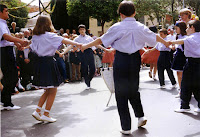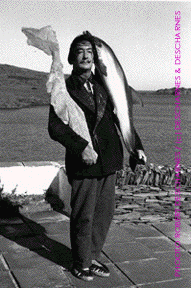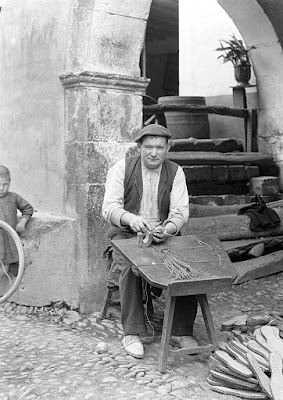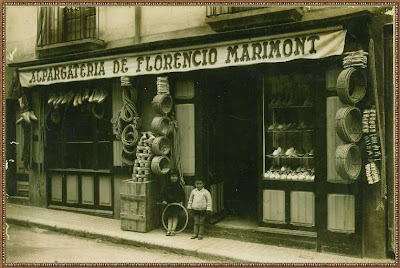The history of the espadrille
The espadrille has been around for centuries maybe even thousands of years. The Archaeological museum of Granada owns a pair of espadrilles that were found on human remains inside the “cueva de los murielagos” (the bat-cave). It is estimated that these shoes are around 4000 years old. Clearly, they are a very primitive version of today’s alpargatas.
 The espadrille, also known as alpargata or espardenya ,is believed to originate from the Basque country in Spain. During the 13th century, the King of Aragons’ infantry men use to wear espadrilles made of esparto, a cactus plant that was originally burned then braided to make the soles.
The espadrille, also known as alpargata or espardenya ,is believed to originate from the Basque country in Spain. During the 13th century, the King of Aragons’ infantry men use to wear espadrilles made of esparto, a cactus plant that was originally burned then braided to make the soles.It was during the 19th century that the production of these shoes truly spread. Since it is a
 handcrafted shoe, making the treads employs many workers. The alpargatero’s (or espadrille maker) only job was to make the rope soles, while the seamstresses sewed the fabric and the band. At the beginning of the XIX century, Mauléon (a French city located in the Atlantic Pyrenees) began selling them in vast quantities. The first people to wear them were the catalano-aragonese military soldiers then subsequently by the priests. Around 1880, most espadrilles were sold to mine workers, but they were also exported to South America. It was the time of the “hirondelles”, which were young girls from the aragonese valleys who came to work in the espadrille factories between the fall and winter seasons.
handcrafted shoe, making the treads employs many workers. The alpargatero’s (or espadrille maker) only job was to make the rope soles, while the seamstresses sewed the fabric and the band. At the beginning of the XIX century, Mauléon (a French city located in the Atlantic Pyrenees) began selling them in vast quantities. The first people to wear them were the catalano-aragonese military soldiers then subsequently by the priests. Around 1880, most espadrilles were sold to mine workers, but they were also exported to South America. It was the time of the “hirondelles”, which were young girls from the aragonese valleys who came to work in the espadrille factories between the fall and winter seasons.Traditionally, the alpargata was either black or it was left in its natural coloured fabric (the
 lighter version was worn on Sundays and the darker version during the week), and each region makes the alpargata in its own unique way. The ones made in Emporda are white and decorated with five bands of colour over the top of the shoe. One of the most famous designs made of white single-coloured fabric is worn by the Sardanes Dancers (traditional catalan dance).
lighter version was worn on Sundays and the darker version during the week), and each region makes the alpargata in its own unique way. The ones made in Emporda are white and decorated with five bands of colour over the top of the shoe. One of the most famous designs made of white single-coloured fabric is worn by the Sardanes Dancers (traditional catalan dance). Around 1950, fashion evolved and this forced alpargata makers to reinvent the shoe with a more sophisticated design that was better suited to the times. This contributed, during the 1960s, to a special order of shoes for the Parisian festivities by the most celebrated designer of the time, Mr. Yves St-Laurent. He asked for an espadrille with a heel, which had never been done before. Suddenly, it was all the rage! Today, almost all the women who live in the southern regions have a pair of alpargatas with heels and ribbons that tie around the ankle.
Around 1950, fashion evolved and this forced alpargata makers to reinvent the shoe with a more sophisticated design that was better suited to the times. This contributed, during the 1960s, to a special order of shoes for the Parisian festivities by the most celebrated designer of the time, Mr. Yves St-Laurent. He asked for an espadrille with a heel, which had never been done before. Suddenly, it was all the rage! Today, almost all the women who live in the southern regions have a pair of alpargatas with heels and ribbons that tie around the ankle.Today, espadrilles are still extremely popular both in France and in Spain, especially in the summer. People seemed to like it because of the sole, which is 100% natural, molds itself to the shape of the foot, and allows the skin to breathe. The simplicity of this shoe makes very versatile and therefore easy to match with all sorts of different styles. If the espadrille has already been around for 4000 years then it’s not about to go out of fashion now!!
Enjoy the following historical pictures








